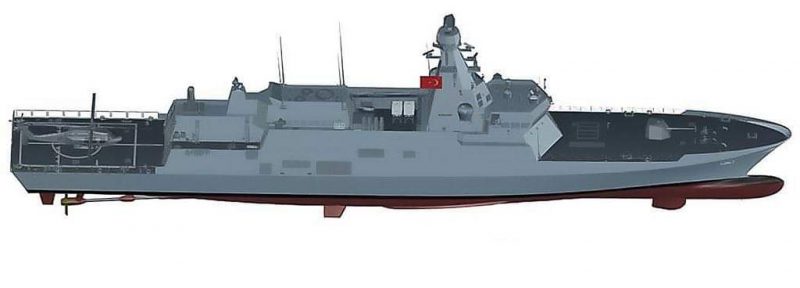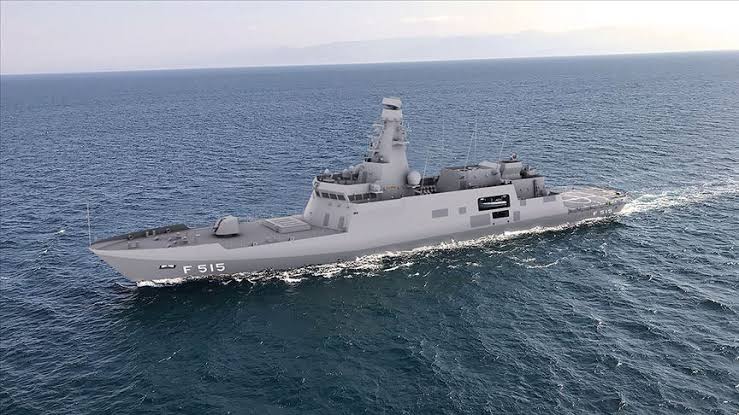The first ship (TCG Istanbul) of indigenous I-class frigate project of the Turkish Navy is scheduled to be launched by the end of 2020, the General Director of Turkish state-supported company STM Murat Ikinci announced during an online panel conducted by STM ThinkTech.
“From now on, the 4 ships, which are a follow-up of the MILGEM Project will not be produced as corvettes. Instead, they will be in the form of I-class frigates and manufactured so. The construction of the ship as the first version of I-class still continues to be produced in Istanbul Naval Shipyard Command in the charge of STM as the prime contractor and with the participation of a number of companies.” he added.
“Our plan is to launch I-class frigate that by the end of 2020. I hope that after equipping the ship once launched, it will be successfully delivered to the Armed Forces.”
I-Class (Istanbul-class) Frigates:
The Istanbul-class frigates are a planned group of four frigates for the Turkish Naval Forces. Developed under the MILGEM national warship program as the TF-100-class frigate, the Istanbul class is an enlarged variant of the Ada class anti-submarine corvette, with enhanced endurance and the fitting of a Mark 41 vertical launch system for a multi-role capability. Also known as the I-class frigate and the MILGEM-G-class frigate, the nameship of the class was cut first steel on 19 January 2017, keel laid on 3 July 2017, and is expected to commission in 2021.
The Istanbul class has its origins in the Turkish MILGEM project to develop its own indigenous warships and warship building industry. The program calls for the building of a family of twelve warships, in three classes each of four ships, all with high degrees of commonality. The first of the three classes is the Ada-class anti-submarine/patrol corvette. The Istanbul class, originally known as the TF-100 class, belongs to the second of these classes and is a multi-role variant of the Ada class. The final class will be the TF2000 class, which will be the air defence member of the family.
The Istanbul class is an enlarged variant of the Ada class and will feature a slightly larger hull for improved endurance. In addition to retaining the guns, self protection and anti-submarine warfare systems of the Ada class, the Istanbul class will have twice the number of anti-ship missiles and will be equipped with a 16 cell Mk.41 VLS, capable of firing RIM-66 Standard, RIM-162 ESSM and VL ASROC missiles, indigenous ATMACA surface to surface missiles and network enabled combat management system dubbed as “GENESIS ADVENT”.
The brand-new frigates will accommodate a 10-tone helicopter with platform, hangar and extensive service and handling equipment. The CODAG type Main Propulsion System will be used on the frigate consist of one gas turbine and two diesel engines.
Istanbul Naval Shipyard is responsible for design and the prototype ship construction. Construction of the first ship of the class has been officially begun on July 3rd 2017 at Istanbul Naval Shipyard.

The general specifications of the frigates;
- Overall length: 113.2 meters
- Maximum beam : 14.4 meters
- Displacement : 3000 tons
- Max Speed : +29 kts
- Range with economic speed : Around 5700 nautical miles
- Unconditional operations at sea state 5
- Minimum 15 days of operational capability without replenishments
- Complement : 123
The mission function of “I” Class Frigate is to protect maritime interests of the Republic of Turkey and establish naval deterrence and prevention by;
- Flying the flag and making the presence felt,
- Carrying out counter-terrorism activities at sea,
- Performing search and rescue missions,
- Executing anti-submarine warfare operations at open seas and littoral waters and detecting, identifying and destroying targets by establishing surface patrol regions, and
- Performing coordinated operations with other naval and air assets which take part in sea control operations.



